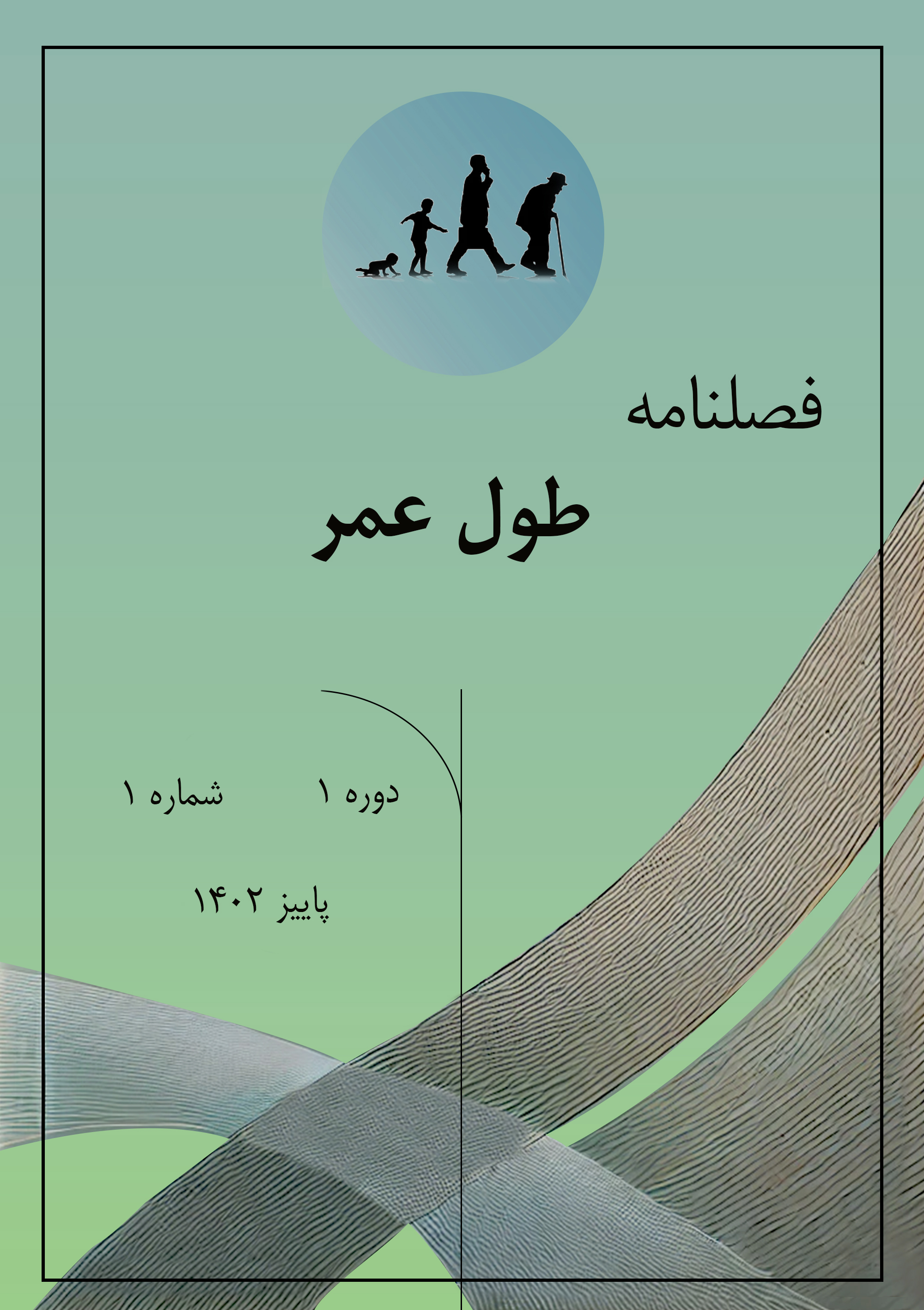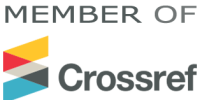همبستگی بین سواد اطلاعاتی و سواد سلامت در معلمان تربیت بدنی (مطالعه موردی: اداره کل آموزش و پرورش استان گیلان)
کلمات کلیدی:
سلامت, سواد اطلاعاتی, معلمانچکیده
سواد سلامت، میزان ظرفیت هر فرد برای کسب، تفسیر و درک اطلاعات اولیه از مفاهیم آموزشی برای اخذ تصمیم گیری مناسب میباشد. هدف از این پژوهش، همبستگی بین سواد اطلاعاتی و سواد سلامت در معلمان تربیت بدنی در اداره کل آموزش و پرورش استان گیلان بود. پژوهش از نوع توصیفی-تحلیلی و به شیوه مقطعی است که در سال 1399 انجام شد. تعداد 175 معلم به عنوان نمونه مورد مطالعه انتخاب شدند. از پرسشنامههای استاندارد سواد اطلاعاتی بروجنی و همکاران و سواد سلامت (HELIA) استفاده گردید و از آزمون کولموگراف اسمیرنوف برای طبیعی بودن دادهها و برای تجزیه و تحلیل دادهها از آزمونهای توصیفی و استنباطی استفاده شد و کلیه عملیات آماری با استفاده از نرم افزارهایSPSS و PLS صورت گرفت. ضریب مسیر بین سواد اطلاعاتی با سواد سلامت در معلمان تربیت بدنی در اداره کل آموزش و پرورش استان گیلان(91/0) بدست آمد که نشان میدهد ارتباط مثبت و معنادار است. همچنین سطح معناداری ضرایب مسیرهای بین سواد سلامت با سن، وضعیت استخدامی و تحصیلات (97/1=t) و سواد اطلاعاتی با سن، وضعیت استخدامی و تحصیلات (98/1=t) کسب شد که حاکی از ارتباط معناداری بین متغیرها میباشد (P˂0/05). بحث و نتیجه گیری: به نظر میرسد سواد اطلاعاتی بر مهارتهای اطلاعاتی از كسب اطلاعات تا ارزیابی و استفاده از اطلاعات تاكید دارد و توسعه مهارتهای سواد اطلاعاتی در معلمان میتواند زمینه افزایش سواد سلامت آنها را نیز فراهم سازد.
مراجع
Bjørnsen, H., Eilertsen, M. E. B., Ringdal, R., Espnes, G. A., & Moksnes, U. K. (2017). The Relationship between Positive Mental Health Literacy and Mental Well-Being Among Adolescents: Implications for School Health Services. J Sch Nurs, 1-10. https://doi.org/10.1177/1059840517732125
Buysse, H., Peleman, R., & De Meulemeester, A. (2018). Information literacy in health sciences education: proposal of a new model in a multi-perspectivism setting. Journal of the European Association for Health Information and Libraries, 14(1), 15-20.
Chaleshgar-Kordasiabi, M., Ramezani, A., & Bakhshavand, A. (2020). Relationship between Health Literacy and Self-care Behaviors in Patients with Type 2 Diabetes. J Health Syst Res, 15(4), 262-271.
Ellis, J., Mullan, J., Worsley, A., & Pai, N. (2012). The role of health literacy and social networks in arthritis patients' health information-seeking behavior: a qualitative study. Int J Family Med, 4(2), 1-6. https://doi.org/10.1155/2012/397039
Fisher, Z. (2017). Facing the frames: using the Framework as a guide for a credit-bearing information literacy course. College & Research Libraries News, 78(7), 354. https://doi.org/10.5860/crln.78.7.354
Fleary, S. A., Joseph, P., & Pappagianopoulos, J. E. (2018). Adolescent health literacy and health behaviors: A systematic review. Journal of AdolescenceVL - 62, 116-127. https://doi.org/10.1016/j.adolescence.2017.11.010
González-Chica, D. A., Mnisi, Z., Avery, J., & Duszynski, K. (2016). Effect of health literacy on quality of life amongst patients with Ischaemic heart disease in Australian general practice. PLoS One, 11(3), 1-15. https://doi.org/10.1371/journal.pone.0151079
Hackett, D. H. M. (2018). An elephant in the room? Information literacy in the narrative of UK public libraries. Journal of Information Literacy, 12(1), 4-26. https://doi.org/10.11645/jil.v12i1.2305
Hahn, E. A., Magasi, S. R., Carlozzi, N. E., & Tulsky, D. S. (2017). Health and functional literacy in physical rehabilitation patients. Health Lit Res PractVL - 1(2), e71-85. https://doi.org/10.3928/24748307-20170427-02
Haruna, H., & Hu, X. (2018). International trends in designing electronic health information literacy for health sciences students: a systematic review of the literature. The Journal of Academic Librarianship, 44(2), 300-312. https://doi.org/10.1016/j.acalib.2017.12.004
Kickbusch, I., & Maag, D. (2008). Navigating Health: the Role of Health Literacy (Vol. 3). https://doi.org/10.1016/B978-012373960-5.00584-0
Moghadaszadeh, H., Firooz, M., & Mohammadi, K. (2016). Investigating the relationship between information literacy skills and the effectiveness of primary school teachers in Sari. Library and Information Research Journal, 6(1), 320-306.
Montazeri, A., Tavousi, M., Rakhshani, F., Azin, S. A., Jahangiri, K., & Ebadi, M. (2014). Health Literacy for Iranian Adults (HELIA): development and psychometric properties. Payesh, 13(5), 589-599.
Morrison, A. K., Glick, A., & Yin, H. S. (2019). Health Literacy: Implications for Child Health. Pediatrics in review, 40(6), 263-277.
Nutbeam, D., McGill, B., & Premkumar, P. (2018). Improving health literacy in community populations: a review of progress. Health Promotion International, 33IS - 5, 901-911. https://doi.org/10.1093/heapro/dax015
Paasche‐Orlow, M. K., Parker, R. M., Gazmararian, J. A., Nielson-Bohlman, L. T., & Rudd, R. R. (2005). The prevalance of limited health literacy. J Gen Intern Med, 20(2), 175-184. https://doi.org/10.1111/j.1525-1497.2005.40245.x
Rowlands, G., Shaw, A., Jaswal, S., Smith, S., & Harpham, T. (2017). Health literacy and the social determinants of health: a qualitative model from adult learners. Health Promot Int, 32(1), 130-138.
Song, L., Mishel, M., Bensen, J. T., Chen, R. C., Knafl, G. J., & Blackard, B. (2012). How does health literacy affect quality of life among men with newly diagnosed clinically localized prostate cancer? Cancer, 118(15), 3842-3851. https://doi.org/10.1002/cncr.26713
Tehrani Banihashemi, S. A., Amir Khani, A., Haghdoust, A., Alavian, M., Asghari Fard, H., & Baradaran, H. (2007). Health literacy in five province and relative effective factors. Strides in Development of Medical Education, 4(1), 1-9.
Vamos, S., Okan, O., Sentell, T., & Rootman, I. (2020). Making a Case for Education for Health Literacy: An International Perspective. International journal of environmental research and public health, 17(4), 1436. https://doi.org/10.3390/ijerph17041436
Vozikis, A., Drivas, K., & Milioris, K. (2014). Health literacy among university students in Greece: determinants and association with self-perceived health, health behaviors and health risks. Arch Public Health, 72(1), 15. https://doi.org/10.1186/2049-3258-72-15
Yehle, K. S., Plake, K. S., Nguyen, P., & Smith, D. (2016). Health-related quality of life in heart failure patients with varying levels of health literacy receiving telemedicine and standardized education. Home Healthcare Nurse, 34(5), 267-272. https://doi.org/10.1097/NHH.0000000000000384
Yom-Tov, E., Marino, B., Pai, J., Harris, D., & Wolf, M. (2016). The effect of limited health literacy on how internet users learn about diabetes. Journal of Health Communication, 21(10), 1107-1114. https://doi.org/10.1080/10810730.2016.1222033

دانلود
چاپ شده
ارسال
بازنگری
پذیرش
شماره
نوع مقاله
مجوز
حق نشر 2025 سیاوش خداپرست, مازیار کلاشی (نویسنده); وحید بخشعلی پور; ابوذر پارسا (نویسنده)

این پروژه تحت مجوز بین المللی Creative Commons Attribution-NonCommercial 4.0 می باشد.









